
© Ingmar Jernberg. (Click image for larger version)
Nordic Cool 2013 season: GoteborgsOperans Danskompani
Beethoven’s 32 Variations, OreloB, Your Passion is Pure Joy to Me
Washington, Kennedy Center Eisenhower Theater
16 March 2013
en.opera.se
www.kennedy-center.org
About Nordic Cool 2013 festival
The Kennedy Center’s Nordic Cool 2013 festival brought to Washington D.C. troupes from Iceland (Iceland Dance Company), Denmark (Danish Dance Theater), Norway (Carte Blanche), Finland (Tero Saarinen Company), and Sweden (GöteborgsOperans Danskompani). I deeply enjoyed this three-week-long Nordic dance experience, which provided a vivid snapshot of what’s happening in Scandinavian dance. Even though the choreography was not always first-rate, the dancers were exceptionally talented, well-rehearsed and genuinely dedicated.
As I learned about these companies and their history, the most striking observation for me was that most of them have departed over the years from their academic classical ballet roots and morphed into cutting-edge, contemporary dance enterprises.

© Ingmar Jernberg. (Click image for larger version)
Take for example the Reykjavik-based Iceland Dance Company (IDC). The island’s first and only professional dance ensemble was founded 40 years ago as Iceland’s national ballet, but its focus changed in 1996, when former company member Katrin Hall became IDC’s artistic director, reshaping the company’s style and repertory to serve contemporary dance. The company’s current artistic director, Lára Stefánsdóttir, continues Hall’s traditions, fostering IDC’s singular identity and concentrating on the experimental, provocative and avant-garde choreography.
Finland’s Tero Saarinen was a successful classical soloist with the Finnish National Ballet when he abruptly ended his classical ballet career, founded his own company and began creating visually absorbing contemporary dances. His work is imbued with the aesthetics of Japanese Butoh theater and martial arts, but with no pointe shoe in sight.
The Swedish company, GöteborgsOperans Danskompani, which wrapped up the festival with a triple-bill performance at the Eisenhower Theater, used to be known as The Göteborg Ballet. Comprising 39 dancers, it is now the largest modern dance company in the Nordic region. In the past 10 years the company has transitioned from exclusively classical ballet to a mix of ballet and modern fare to solely contemporary dance, hence its new name, which ditches the word “ballet,” replacing it with “dance” to underscore the troupe’s new identity.
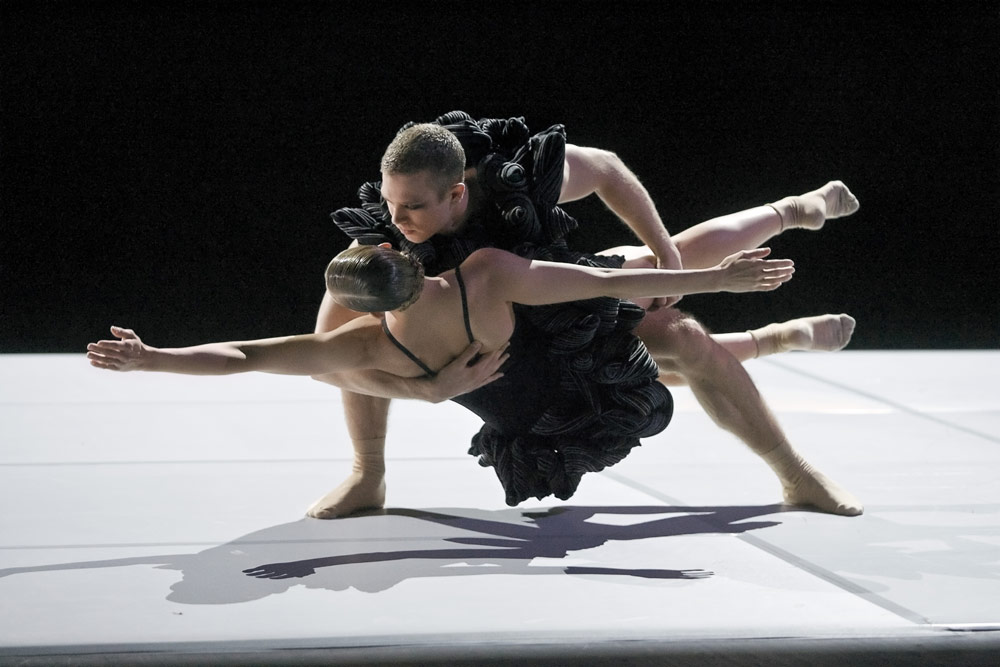
© Ingmar Jernberg. (Click image for larger version)
The most successful piece from Göteborg’s troupe was OreloB (Bolero spelled backwards), created by Finnish choreographer Kenneth Kvarnström as part of the program titled 3xBoléro – a dance-triptych which interprets Ravel’s Bolero from three different perspectives. (The other two were Johan Inger’s 2001 Walking Mad and Alexander Ekman’s 2008 Episode 17).
The driving force of OreloB is its electronic score by Finnish rock musician Jukka Rintamaki, who based his eerie composition on the sinuous repetitions of Ravel’s greatest hit, stripping off its hypnotic, undulating melody and accentuating its ever-growing crescendo with pounding percussion.
Costume designer Helena Hörstedt outfitted the dancers in futuristic black swimsuits adorned with enormous ruffles and roses, as if sewing Ravel’s unrelenting, snaking rhythms into the fabric. (I thought this offbeat dance attire looked beautiful on the women but rather ridiculous on the men.) The set design consisted of a special dancing floor, which boasted its own eerie illumination during the show, and a spinning metallic wall on the left-hand side of the stage. This wall served as a door, providing the dancers with effective, even enigmatic, entrances and exits.
As the music embarked on its endless climb, the cast of five dancers took center stage. They looked coolly glamorous and hauntingly detached, like a high-octane fashion cult, their movements vigorous, inventive and sexy. I particularly admired a forceful pas de deux compellingly performed by the alluring Janine Koertge and the towering Dan Langeborg.
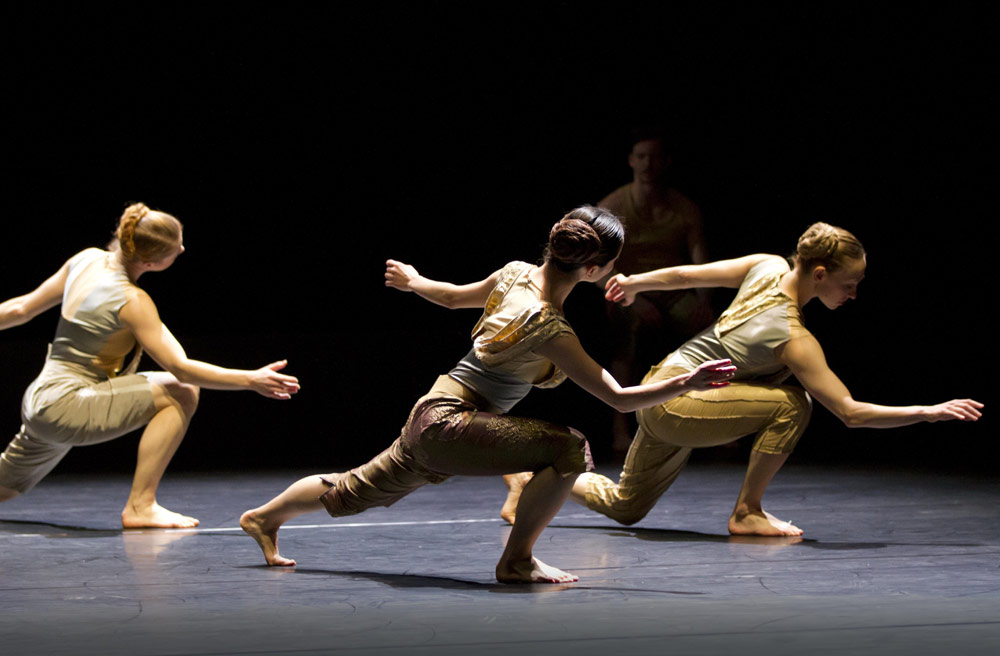
© Mats Backer. (Click image for larger version)
Also on the Göteborg troupe’s program was Orjan Andersson’s Beethoven’s 32 Variations, from 2010, featuring the ensemble of eight dancers (four men and four women) performing to a live piano accompaniment by Joakim Kallhed. The music was Beethoven’s 32 Variations in C Minor and the second movement from Piano Sonata No. 8 (“Pathétique”).
In the course of this piece, the dancers breezed about the stage with energy and drive, acting out tiny scenes as if re-living their personal experiences or memories. Yet the choreography looked rather chaotic and emotionally static and couldn’t match Beethoven’s supremely powerful music, which provided the chief pleasure of the dance, establishing a needed mood and rhythms for the dancers to express their emotions.

© Tilo Stengel. (Click image for larger version)
Finally, in Your Passion is Pure Joy to Me (2009), Belgian choreographer Stijn Calis took inspiration from the achingly sentimental songs of Australian singer and guitarist Nick Cave, sending a group of seven dancers, dressed in T-shirts and colorful jeans, in a search for “hope and consolation after traumatic experiences.” To vent their frustrations and vulnerabilities, the energetic septet restlessly zoomed onstage in a sequence of short choreographic numbers. Unfortunately, most of the time they looked purposeless and disconnected. As a result, much of the dance’s dramatic effect emerged from its soundtrack, which benefited greatly from the compositions by Pierre Boulez, Gonzalo Rubalcaba and Krzysztof Penderecki.






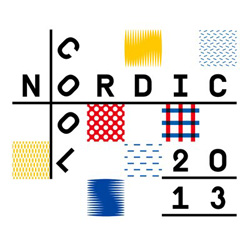





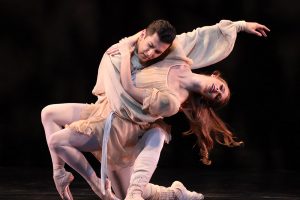
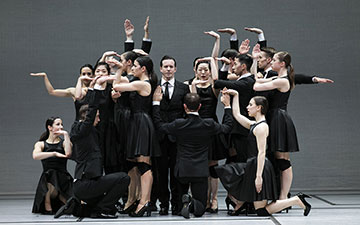
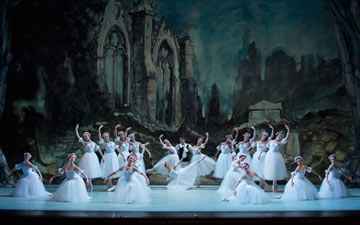

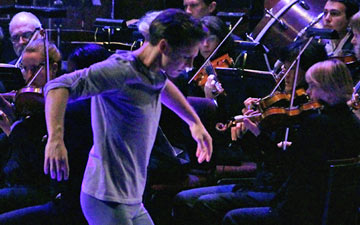
You must be logged in to post a comment.